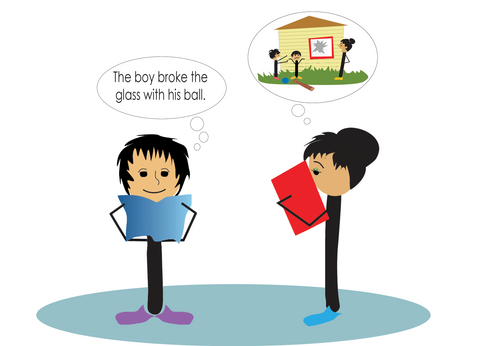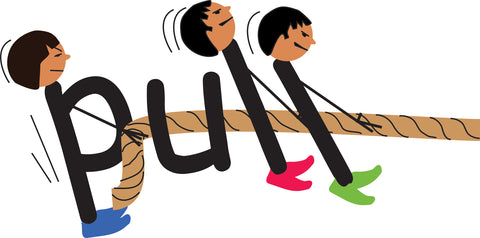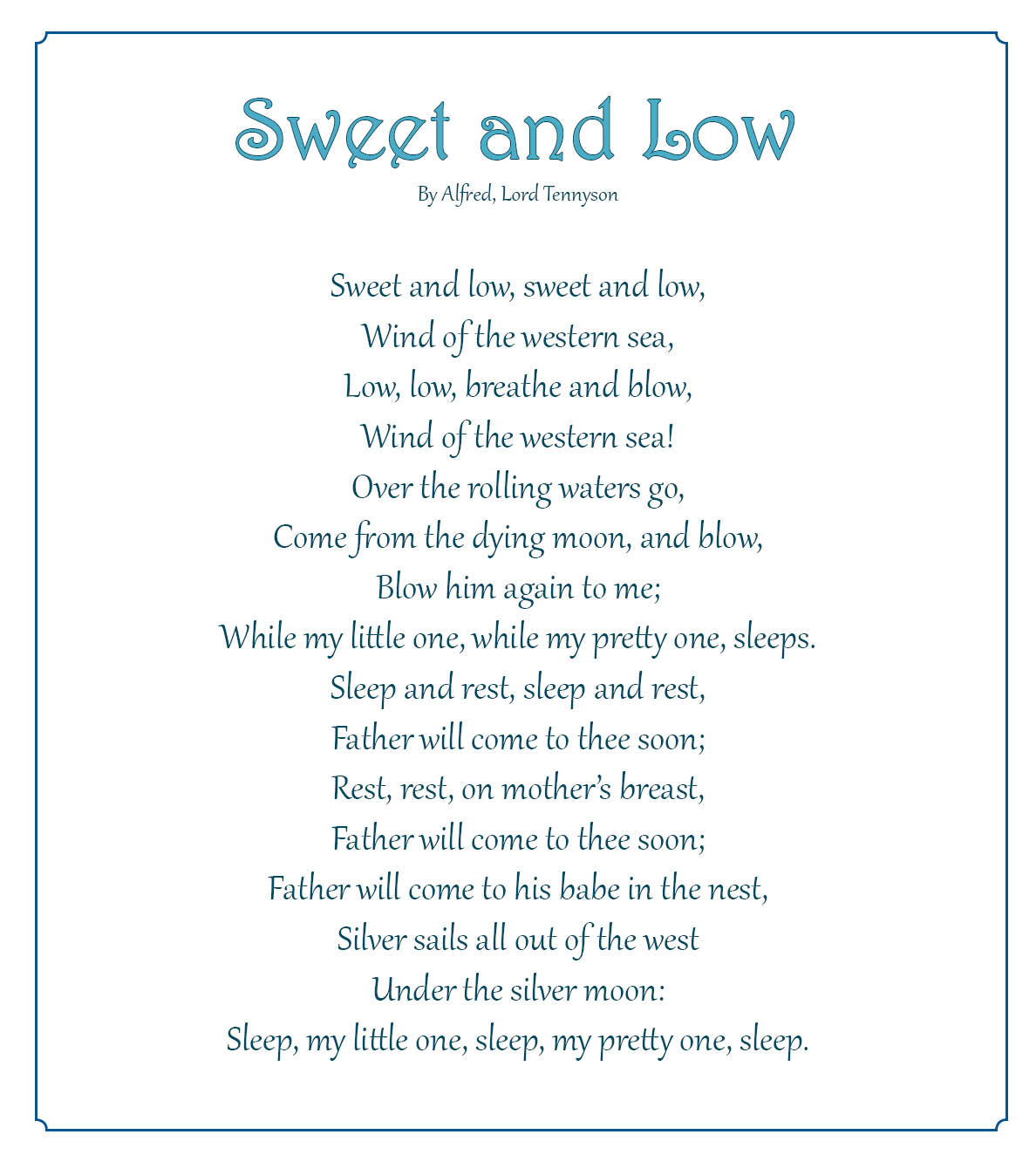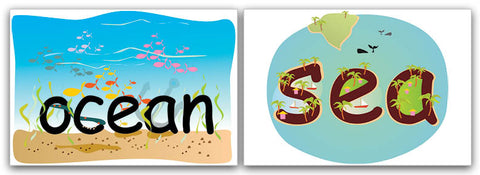Very often when children are learning to read, they focus so much on naming words that they don’t absorb the meaning of the words they are reading. I'd like to suggest some tools and strategies that will go a long way toward helping children improve their reading comprehension over time.
Basically, when we read, we need to create a mental scene that shows the action or the content of the material we read. For me, and for other right-brain dominant or visual learners, this mental scene is a global picture that is formed when we read. We actually see pictures in our minds and when an action occurs, we see what might be called mental movies. I cannot speak for how dominant left-brained people react to print. I have heard that they think in words and I am not sure what that means nor what that looks like (please feel free to comment if you can shed light on this question).
Images Improve Reading Comprehension
When teaching children who struggle with comprehension, it is really helpful to have images accompany words and sentences. The image is like a stepping stone to creating mental images for themselves. In fact, during early learning when children are just beginning to learn words, it is critical to embed images into the words because so many young children believe their goal is to learn to say the words they see or to sound them out. Often, no one tells them the words carry meaning! Embedding a picture from day one will help them avoid reading comprehension problems. As these children are learning their first words, talk to them about making mental images for themselves and how important this skill is.
How to Teach Visualization
The first step toward creating mental images is to use stylized picture words such as
SnapWords®, where the images are already embedded. Have the child study the image and notice details. Next, have the child close their eyes and "see" the image with the word embedded in their own imagination. The more you do this, the stronger the imagination/visualization muscle will become. If you share with the child that visualization is a powerful learning tool, they will come to habitually practice visualization without being prompted to.
Pictures & Spelling
Word pictures also help with spelling. Try it for yourself; study the word below and close your eyes and visualize it.
How long do you think you will remember this word and the picture? I designed this stylized word a long time ago, yet anytime I think of the word "enough," I picture these characters. I think they just had Thanksgiving dinner and ate too much, and that little girl is managing to vocalize the fact that she had more than enough to eat! The character playing the G is content to let her speak for him while the H character is gazing off into space in a sated euphoria.
Now try this with a child. Have them study the picture for "pull."
Next, have them close their eyes and describe the image they see in their mind.
How many boys are pulling on the rope? Which one has a big muscle-bound chest? How many are tall and thin? When they are finished describing what they see, have them open their eyes and write the word they saw in their mind on paper.
The meaning behind the word is very clear. Point out that the two Ls are guys who are helping the first guy...the big muscly chest. Next, have the child close their eyes and see the word in their imagination. Doubtless, they will be able to read, comprehend, and know how to spell the word after doing all that.
(Two weeks from now, check your own memory of this image, and then check the child's memory.)
Images are Worth a Thousand Words
It is difficult for me, too, when I'm learning a new concept to only have someone's words as they speak to me. Images make all the difference for me. A confession here: I was middle-aged and truly did not understand the difference between a sea and an ocean. I always assumed (because I never really thought about the difference) that they were used interchangeably and that "sea" was used in more romantic, sentimental, poetic occasions. For instance, it's used in a lullaby I heard my mother sing when I was little, which I had the pleasure and delight of singing to my grandchildren as well.
However, I abandoned my right-brained tendency long enough to consult an expert about the difference between sea and ocean. This is what I found:
"Many people use the terms 'ocean' and 'sea' interchangeably when speaking about the ocean, but there is a difference between the two terms when speaking of geography (the study of the Earth's surface). Seas are smaller than oceans and are usually located where the land and the ocean meet. Typically, seas are partially enclosed by land."
National Ocean Service
This was great information to learn, so I created stylized sight words for each of them. The image for "ocean" conveys more of the depth and vastness of the body of water, while the image for "sea" allows the child to see where seas might be located: on the edges of the ocean, but partially surrounded by land. In the stylized sight word for "sea," there are three seas and each has a sailboat. In the picture, the whales will help lead into a discussion about the ocean and the huge body of water where the whales are swimming, but the seas are actually somewhat protected by land on a side or more.
After staring at this word for a few seconds, I can see how permanently the word, complete with meaning and spelling, is branded on my mind. I can imagine standing on the island (e), watching the whales, and feeling the salt air blowing me around a bit. I can hear seagulls and the waves lapping.
This is a complete learning experience - far different from showing a child the word "sea" and telling them a sea is a body of water on the edge of an ocean that is partially surrounded by land. That learning experience may or may not stick!
Conclusion
Practice visualization with your students today and see how their reading comprehension improves. After having your child close their eyes to visualize the new word, have them draw what they see on these
plain word sheets. Have them write a sentence using the word. Remember to have fun and enjoy this time together!
Please
contact us with any questions; we are happy to help!










I want to be in touch with your fantastic material!
Leave a comment